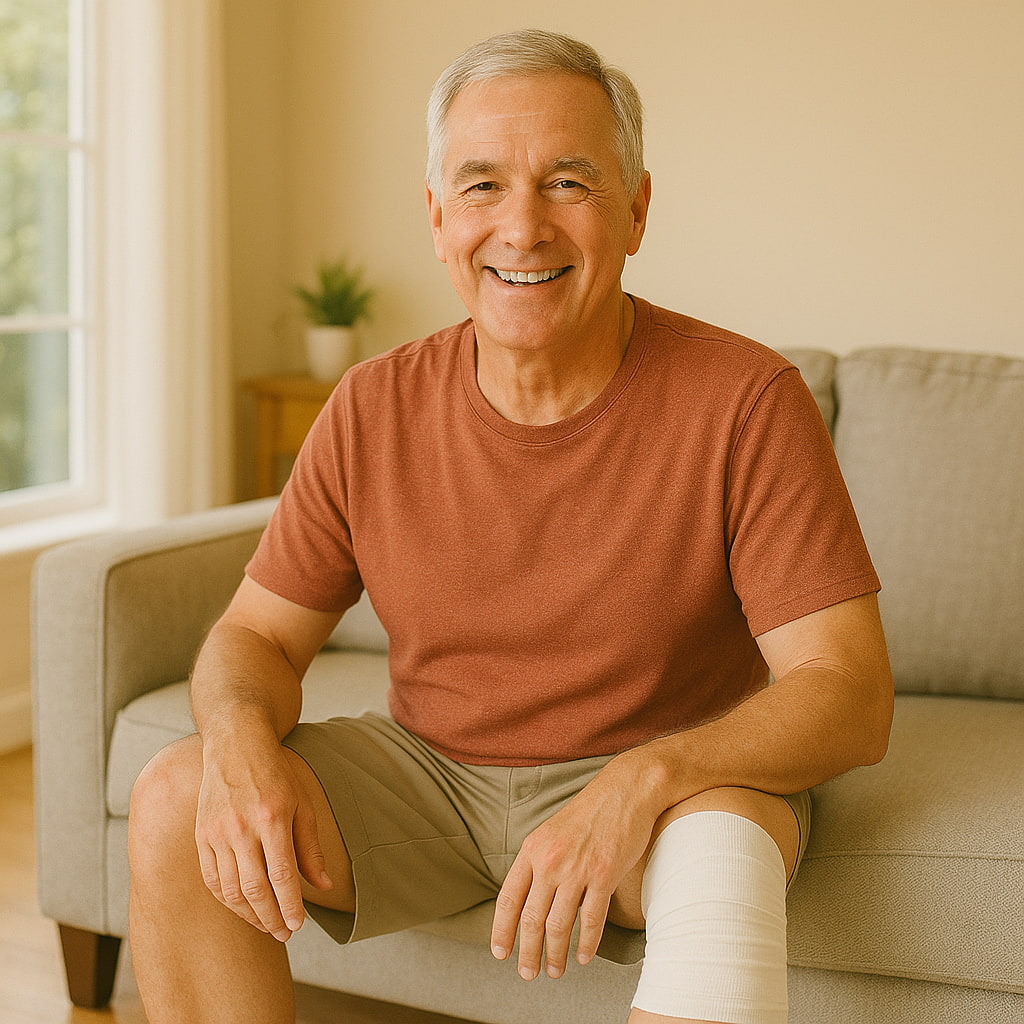See Also
Rehabilitation Goals
- Reduce pain and swelling
- Restore knee range of motion
- Improve strength and flexibility
- Regain balance and coordination
- Resume daily activities safely
- Prevent complications
Expected Recovery Time
| Milestone | Timeframe |
|---|---|
| Walk with walker or crutches | Immediately |
| Walk with cane or no aid | 4-6 weeks |
| Resume most daily activities | 6-12 weeks |
| Resume low-impact sports | 3-6 months |
| Full recovery | 6-12 months |
Phase 1: Early Post-op (0-2 weeks)
Goals
- Control pain and swelling
- Protect the surgical site
- Begin gentle movement
- Prevent blood clots and complications
Instructions
- Apply ice packs (15-20 minutes, several times daily)
- Elevate the leg above heart level
- Wear compression stockings if advised
- Take prescribed medications as directed
- Perform breathing exercises to prevent lung complications
- Attend physiotherapy sessions as scheduled
- Use a walker or crutches for walking
Exercises
- Ankle pumps (20-30 repetitions per hour)
- Quadriceps sets (hold for 5 seconds, 10 repetitions)
- Gluteal squeezes (hold for 5 seconds, 10 repetitions)
- Heel slides to gently bend the knee
- Passive knee extension using a towel under the heel
- Short, assisted walks several times per day
Phase 2: Sub-Acute Recovery (2-6 weeks)
Goals
- Increase knee range of motion
- Improve walking ability
- Build basic strength
- Reduce reliance on walking aids
Instructions
- Gradually increase walking distance
- Transition from walker to cane as advised
- Avoid kneeling or twisting the knee
- Continue icing after exercises as needed
Exercises
- Continue Phase 1 exercises with more repetitions
- Stationary cycling with minimal resistance
- Seated knee extensions
- Standing hip abductions and extensions
- Gentle mini-squats (as tolerated)
- Heel raises for calf strength
- Balance exercises (e.g. standing on one leg with support)
Phase 3: Strengthening and Functional Recovery (6-12 weeks)
Goals
- Achieve near-full knee range of motion
- Restore normal walking pattern
- Improve lower body strength
- Resume most daily activities
Instructions
- Walk without assistive devices as tolerated
- Avoid high-impact activities
- Continue home exercises and physiotherapy sessions
Exercises
- Leg press (light weight, short range initially)
- Step-ups and step-downs
- Side-lying hip strengthening
- Stationary cycling with more resistance
- Swimming or water walking (if wound healed)
- Low-resistance elliptical training
- Gentle hamstring stretches
Phase 4: Advanced Strengthening and Return to Activity (3-6 months)
Goals
- Return to recreational activities
- Build endurance and stamina
- Maximize strength and flexibility
Instructions
- Gradually resume recreational activities such as golf, hiking, or dancing
- Avoid high-impact sports like running or jumping
Exercises
- Progressive resistance training (leg press, squats, lunges)
- Treadmill walking or light jogging (if advised)
- Water aerobics
- Balance and proprioception drills
- Core strengthening exercises
When to Contact Your Surgeon
- Increased redness, swelling, or warmth around the incision
- Persistent fever above 38°C
- Severe pain not relieved by medication
- Drainage or unusual discharge from the wound
- Calf pain or swelling (may indicate blood clots)
- Difficulty breathing or chest pain (seek emergency care)
Disclaimer
This is a general guideline. Your physiotherapist or Dr Lambers may adjust the protocol based on your specific condition and progress.
